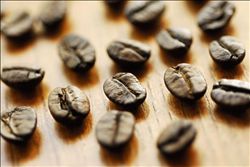Citrus-flavored Rosa Coffee Flavor description, grindability treatment methods and taste characteristics
The dry aroma of Rosa is very bright, with aromas of rose and jasmine, with aromas of pomelo and citrus, light baked with nutty aromas, and wet aromas with hazelnut and more floral characters. In terms of taste and flavor, compared with the previously rising aroma, it may be slightly mild and subtle in the early stage, and the flower and fruit flavor will gradually increase as the temperature drops, and the cold aroma is excellent (sweet preserved fruit, rose fruit, orange glaze jam, strawberry jam, silk pine, cherry, vanilla and rose gradually fade, leading to lemon-flavored fruit). This is a coffee that can be praised by a large number of adjectives, the sweetness of Gansi, which is testing the brightness of this coffee, especially in the case of light roasting. Fruit flavor and floral elements are almost like Yega Xuefei from Africa and Ethiopia on the other side of the world. Of course, these are all old news now. Some small farms also get summer roses and are eager to grow their own roses.
However, the results are different, and this "star" variety seems to have different tastes in different geographical locations due to the influence of weather, soil and altitude. However, in the Aktenango region, we see typical rosy summer features: slender beans, changes during baking, and the elegant and unripe flavor of flowers, tropical fruits, and strong sweetness in the cup; these are the feelings that Rosa has always given us. Properly baked, they make you feel like sipping the fragrance of a bouquet of flowers. You may not know the story of Rosa, an ancient native species from Ethiopia that was brought as a coffee sample to a coffee experimental garden in Costa Rica and distributed to several small farms for small-scale trials.
Not many people paid attention to Rose Summer until one day, Esmeralda Manor in Panama separated it from other varieties and won the national coffee competition.
According to the Panamanian Emerald Manor website, "Rose Summer" coffee seeds were taken from Geisha Mountain (Mount Rosa) in southwestern Ethiopia in 1931, transplanted to Kenya in 1931, replanted in Tanzania in 1936 and introduced to Costa Rica in 1953. It is unknown when they will be introduced to Jaramillo Manor in Panama. After the Price Peterson family, who only knew the Emerald Farm (Hacienda La Esmeralda) of Panama, bought the Galamie Manor in 1996, they found that the coffee flavor on the edge of the estate was unique, so they took part in the 2004 Panama "COE" competition, never wanted to become famous, and won awards almost every year since. Later, it was identified that the variety originated from Ethiopia's "Rose Summer Mountain", so it was called "Rose Summer" coffee. Panamanian Gesha coffee sold for a sky-high price of nearly $290 per kilogram.
The Herrera family of Hope Farm in Colombia introduced Rosa coffee from the Emerald Manor of Panama in 2007. Although it failed at first, after years of hard work, it won the first prize in the American Fine Coffee Association's Annual Bean Competition (COTY-Coffees of the Year) in Houston in April 2011.
American Fine Coffee Association 2011 Global Best Coffee (Raw Bean) Competition announced
David Piza C, who majored in industrial engineering from the University of Los Angeles at Bogota, is a professional coffee cup tester and judge of the barista competition in Colombia. When he came to China in August this year, he brought a variety of high-quality manor boutique coffee, including Geisha of Colombia. The author bakes the coffee according to the raw bean information provided by Pei Daxing and the expected baking curve in his mind. To the surprise of everyone present, compared with the samples brought by Pei Daxing, the Gesha baked by the author can hardly be seen with the naked eye. Although Pei Daxing did not take out the samples they had been thinking about baking in Colombia before the author baked, coincidences often happen.

Important Notice :
前街咖啡 FrontStreet Coffee has moved to new addredd:
FrontStreet Coffee Address: 315,Donghua East Road,GuangZhou
Tel:020 38364473
- Prev

Ethiopian Coffee Flavor description of unique quality; introduction to the processing methods for the characteristics of grinding degree of taste
This kind of coffee grows in areas ranging from 1500 to 2200 meters above sea level. This coffee is washed in a clear stream, carefully selected by hand and exposed to plenty of sunshine. The taste is unique; the fruit is medium-sized, comparable to Mocha. The taste is mellow, the charm is unique, it gives people a fresh feeling, and the market prospect is optimistic. It is estimated that this kind of coffee is average in 42000 hectares of cultivated area.
- Next

Introduction to the characteristics of taste treatment methods for the grinding degree of Bolivian coffee
Dry aroma (1-5): 3.6 wet aroma (1-5): 3.7 acidity (brightness) (1-10): 8.8 taste (layering) (1-10): 8.6 taste (alcohol thickness) (1-5): 2.9 aftertaste (residue) (1-10): 8.5 balance (1-5): 0 basic score (50): 50 total score (maximum 100): 86.1 strength / Main attributes: light intensity / exquisite flowers
Related
- Detailed explanation of Jadeite planting Land in Panamanian Jadeite Manor introduction to the grading system of Jadeite competitive bidding, Red bid, Green bid and Rose Summer
- Story of Coffee planting in Brenka region of Costa Rica Stonehenge Manor anaerobic heavy honey treatment of flavor mouth
- What's on the barrel of Blue Mountain Coffee beans?
- Can American coffee also pull flowers? How to use hot American style to pull out a good-looking pattern?
- Can you make a cold extract with coffee beans? What is the right proportion for cold-extracted coffee formula?
- Indonesian PWN Gold Mandrine Coffee Origin Features Flavor How to Chong? Mandolin coffee is American.
- A brief introduction to the flavor characteristics of Brazilian yellow bourbon coffee beans
- What is the effect of different water quality on the flavor of cold-extracted coffee? What kind of water is best for brewing coffee?
- Why do you think of Rose Summer whenever you mention Panamanian coffee?
- Introduction to the characteristics of authentic blue mountain coffee bean producing areas? What is the CIB Coffee Authority in Jamaica?

